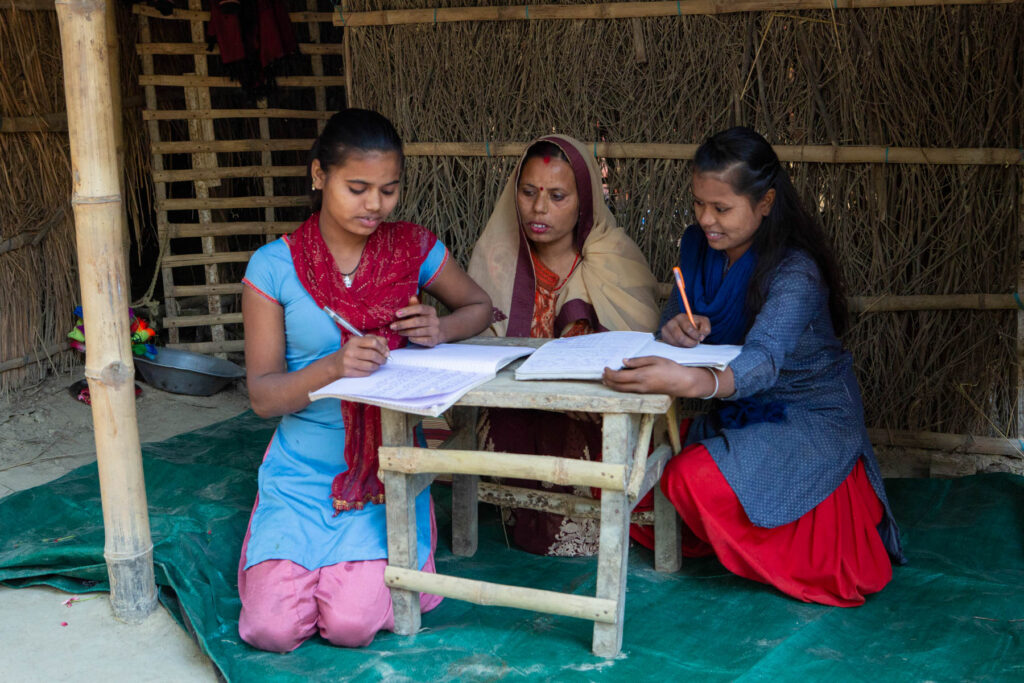
Eggs: More Than Just a Simple Snack
By A’Melody Lee Jacobi and Elizabeth Oywaya | October 8, 2021
October 28, 2021
Childhood hunger severely impacts learning by stunting children’s physical and cognitive development. Children experiencing hunger often face difficulties in concentration and memory, which hinders their ability to perform well in school. This lack of proper nutrition can lead to long-term developmental delays, limiting their future achievements and economic opportunities. Addressing hunger is crucial for breaking this cycle and ensuring children can reach their full educational potential.
Hunger is the discomfort and weakness caused by a lack of food, impacting physical and cognitive functions. Child food insecurity, the lack of consistent access to enough nutritious food, can make it harder for children to focus on learning, build social skills and develop cognitively in early childhood. Hungry children struggle to concentrate in class, leading to poor academic performance. Food insecure children face significant challenges in school readiness and social interactions due to inadequate nutrition.
Malnutrition is a condition where essential nutrients are either insufficient or imbalanced in the diet. It affects brain development and learning abilities, making it difficult for children to absorb and retain information. This is why ensuring children have enough food is crucial for their cognitive development and academic success. Food insecure households face significant challenges in providing adequate nutrition, which further impacts children’s cognitive development.
Stunting is a condition resulting from chronic malnutrition during the most critical periods of growth and development in early childhood. It leads to impaired growth and development, causing children to be significantly shorter for their age compared to the standard growth benchmarks. Stunted children often face long-term consequences, including delayed cognitive development and reduced economic productivity in adulthood.

Wasting refers to acute malnutrition characterized by a rapid loss of body weight and muscle mass. It results from a severe lack of food or recurrent illnesses. Children suffering from wasting have a low weight-for-height ratio and are at a higher risk of mortality due to weakened immune systems and increased susceptibility to infections.
Over the past two decades, global stunting rates among children under five have dropped by 55 million, according to The State of Food Security and Nutrition in the World 2024. Yet, undernutrition remains a stark reality for one in four young children, leading to lasting developmental challenges. While progress has been made, the world remains off track to achieve Sustainable Development Goal 2 — zero hunger — by 2030, with hunger levels mirroring those of 2008 and 2009.
This can have devastating — and sometimes permanent — consequences on a child, influencing their health, education and future economic opportunities long after childhood.
Brain development begins soon after conception and determines a person’s functional abilities, including social behavior, language development, decision-making skills, and learning and cognition.
Research by Laurie C. Miller, a physician, professor and researcher; Neena Joshi, Heifer’s senior vice president of Asia programs; and others has found children’s brain growth to be poor where malnutrition is prevalent.
“The simple issue is the full potential that they have gets compromised because of the kind of food they eat,” Joshi said.
Miller and Joshi have conducted research together for two decades, partnering to understand the context in Heifer International’s project areas, as well as the impact of interventions designed to improve health and well-being. The results of their first study in Nepal drove the development of Heifer’s nutrition curriculum, which has since been adapted for each of Heifer’s country programs.

“When there’s an intentional dissection of the data gathering and analysis it gives a lot of feedback to the work we do,” Joshi said, indicating that research results help inform appropriate program design.
In their study measuring head circumference — a simple determinant of brain size — undernutrition, including calorie deprivation and poor dietary diversity, contributed to diminished brain growth over the first four years of life for children in rural Nepal.
Brain development is one of the early effects of childhood undernutrition, Miller said, alongside other consequences like stunted growth and increased susceptibility to disease.
“Children are not only not getting adequate calories, but they’re not getting adequate micronutrients,” Miller stated. “And these are … really important to development. If you don’t have them in your diet when you’re a baby, you’re not curious [and] you’re not exploring. And if you aren’t curious and exploring, you’re not learning.”
Globally, undernutrition is widely linked to loss of development potential, contributing to behavioral problems, limited economic opportunities and lower academic achievement. Studies show that hunger affects students’ ability to concentrate in school, making it harder to retain information and perform well. An estimated 250 million children under 5 in low- and middle-income countries are at risk of underdevelopment.
The effect of hunger and food insecurity on learning can be lifelong and cyclical, as malnutrition in childhood can manifest in lower productivity and fewer livelihood opportunities in adulthood. Due to low school enrollment, low achievement and the lingering effects of school closures during the COVID-19 pandemic, the World Bank estimates today’s generation of students in low- and middle-income countries might lose $21 trillion in future income.
“The long-term effects [of undernutrition] include problems with learning and school performance that can be quite significant,” Miller said, “and even short episodes of malnutrition or undernutrition can result in very long-lasting effects.”
Poverty is a significant driver of poor learning outcomes, with many families unable to purchase or access the food their children need to reach their full educational potential. Hunger and poverty can lead to absenteeism and poor attendance among school-aged children, causing them to miss out on their education. For those who do attend, coming to school hungry further reduces their ability to focus and learn effectively.
Fewer earnings, resulting from a lack of quality education, can leave students who started in poverty trapped in it. And this cycle can endure for generations.
“The simple issue is the full potential that they have gets compromised because of the kind of food they eat…” — Neena Joshi, senior vice president of Asia programs

“When we work with communities, that’s very obvious,” Joshi said. “The children get sick and their schools are missed, and the hard work they put into their education is compromised. …. There’s a whole cycle of how that impacts a community from not doing the best they can.”
Heifer’s work strengthening locally led food systems and helping people build livelihoods that earn a living income is important to breaking the cycle of poverty in these fragile environments. Financial resources give families the freedom to prioritize education, pay for books and school fees, and provide the quantity and variety of food children need to grow and fulfill their potential — then foster the same in the next generation.
The physical and cognitive development that supports learning and productivity requires an army of nutrients and micronutrients — thiamin, zinc, riboflavin, iron, vitamin B6 — but the dietary diversity required to hit nutritional benchmarks can be difficult to achieve, especially in low- and middle-income countries where money and other resources are scarce.
“Most of the time in poor communities, food is filling stock, that’s all,” Joshi said. “If you are not hungry, then that’s good.”
Children’s diets are often cereal-based in these settings, incorporating few nutrient-dense foods like fruits, vegetables, milk or eggs. Half or more of all the calories consumed in developing countries come solely from grains, such as wheat and maize.
Improving access to a wider variety of foods is one of the most direct ways to help children avoid the permanent consequences of an insufficient diet and stop hunger from affecting learning and future outcomes.

Animal-sourced foods, including meat, milk and eggs, are especially linked to development potential. These foods are potent sources of energy and nutrients, high in protein, omega-3 fatty acids, iron, zinc, vitamin A, vitamin B12 and vitamin D, and diets deficient in them have been connected to poor cognitive ability in children.
Alternately, Miller and Joshi have found more diverse diets, which include vegetables, fruits and animal-sourced foods, to correlate with better overall development in children, with one study in Far-Western Nepal finding dairy consumption alone made low total development 42 percent less likely.
These findings are consistent with those measuring head circumference and, therefore, brain growth. In this study, children under 3 who consumed two or more animal-sourced foods in the previous 24 hours had better head circumference scores than those who had eaten none or only one.
Hunger is a hard truth across Heifer International’s locally led programs. We work alongside farmers and partners to build profitable agricultural livelihoods and sustainable food systems, and help families raise more productive livestock and start kitchen gardens where they can grow a larger variety of fresh, nutritious food.

The nutrition curriculum that was developed from Heifer’s first research project with Miller provides practical education about food groups, recommended diets based on locally available foods and the role of nutrients in physical growth. Additionally, Heifer’s values training tackles cultural norms that contribute to hunger and malnutrition, such as unequal food distribution among family members.
“It’s very important for the community to know the nutritional value of the food that’s available,” Joshi said, especially once they are earning more income and have more choices in what to purchase or plant.
“As we start talking about the different food groups and how that helps you keep healthy, and how [it] impacts the health of the children and, ultimately, their performance in their lives, that’s an ‘aha’ moment for a lot of people,” Joshi added.
Cart is empty
Success!
Please be patient while we send you to a confirmation page.
We are unable to process your request. Please try again, or view common solutions on our help page. You can also contact our Donor Services team at 855.9HUNGER (855.948.6437).
Covering the transaction fee helps offset processing and administrative fees that we incur through taking payments online.